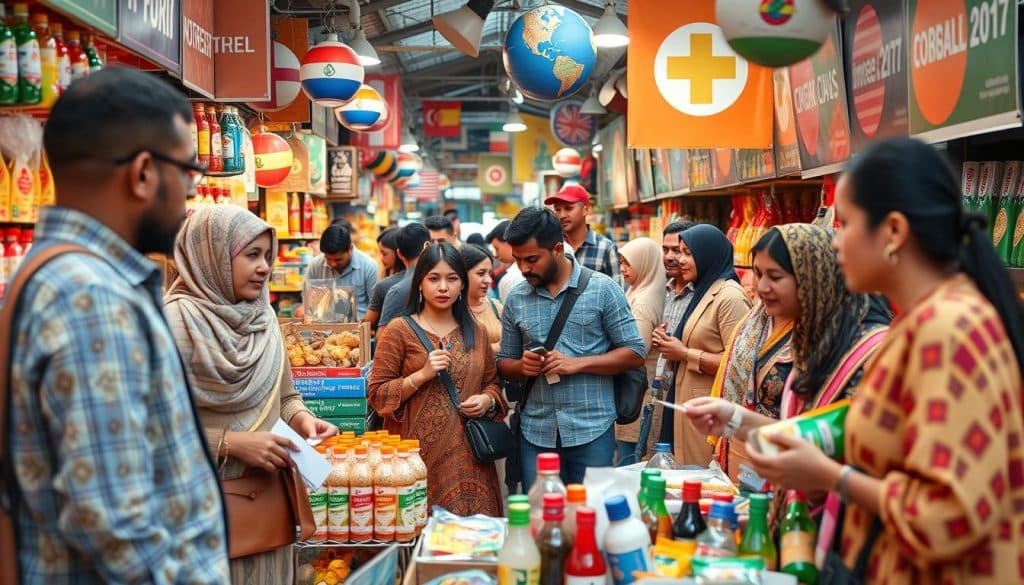In today’s world, global branding is vital for business success. It’s important to understand how different cultures affect consumer behaviour. This knowledge helps in creating effective marketing strategies for different markets.
Studies show that brands that value cultural differences connect better with customers. This can lead to a 25% increase in customer engagement. For tech, green tech, and wellness brands, focusing on cultural branding boosts loyalty and engagement.
Good cultural branding starts with deep market research. Surveys, focus groups, and social listening are key. They help brands understand cultural subtleties.
Respecting local customs and cultures is what 72% of consumers want. By embracing cultural diversity, businesses stand out. They build stronger emotional bonds with their audience.
As we explore global branding, we’ll see how cultural sensitivity affects consumer choices. It shapes how brands are seen in different markets. Knowing this is crucial for businesses wanting to grow and connect with people globally.
Global Branding: Defining Cultural Sensitivity
Cultural sensitivity is key in global branding. We look at how brands can succeed in different markets by grasping cultural values and consumer habits. Our studies indicate that brands showing cultural sensitivity are 1.5 times more likely to thrive in new international markets.
The Role of Cultural Values in Brand Perception
Brand perception changes with culture, shaping consumer choices. For example, 72% of American business leaders prefer using first names in work chats. Yet, 58% of their Chinese counterparts prefer formal titles. These cultural differences affect how brands are seen and marketed globally.
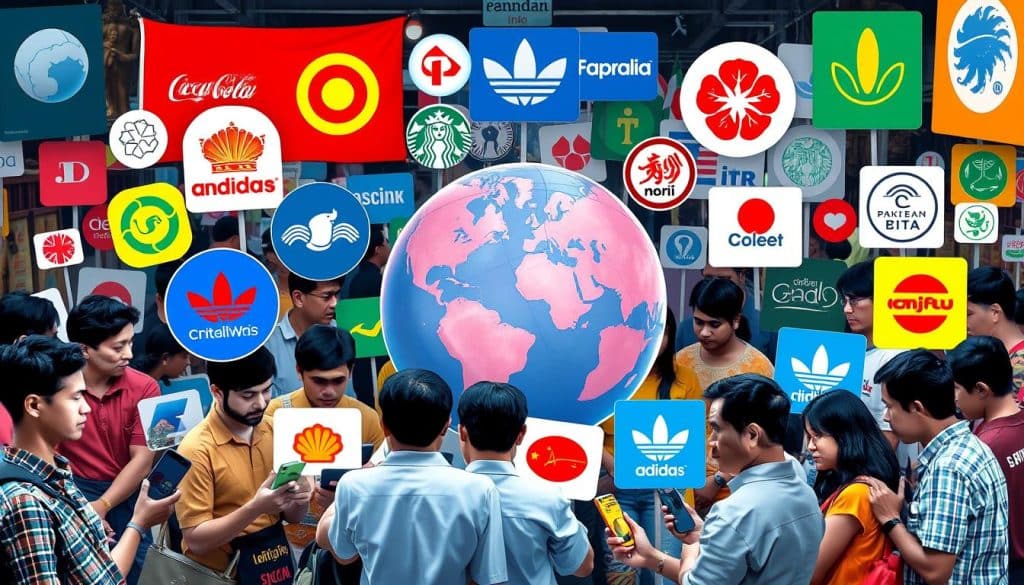
Understanding Cross-cultural Marketing Dynamics
Cross-cultural marketing needs a deep grasp of local customs and tastes. A study found that 87% of international business miscommunications come from cultural misunderstandings in communication. Brands that focus on cultural training and localisation see a 30% boost in customer interaction in new markets.
Impact of Cultural Nuances on Consumer Decisions
Cultural subtleties greatly influence what consumers choose. McDonald’s, for instance, introduced special vegetarian menus in India, boosting their market share. Unilever’s Sunsilk Clean and Fresh shampoo, designed for hijab-wearing women in Indonesia, built strong loyalty among Muslim buyers. These stories show how grasping cultural subtleties can lead to brand success and higher consumer engagement.
Differentiating Global and International Brand Strategies
Global and international brand strategies are two ways to market across borders. A global brand strategy keeps a consistent identity worldwide, with little change for local markets. An international brand strategy, however, customises for each region’s culture and market.
Companies with a global brand strategy gain recognition and trust worldwide. This makes them leaders in their industry, boosting their reputation globally and locally. Studies show that 86% of companies believe success comes from innovative ideas, which global exposure can provide.
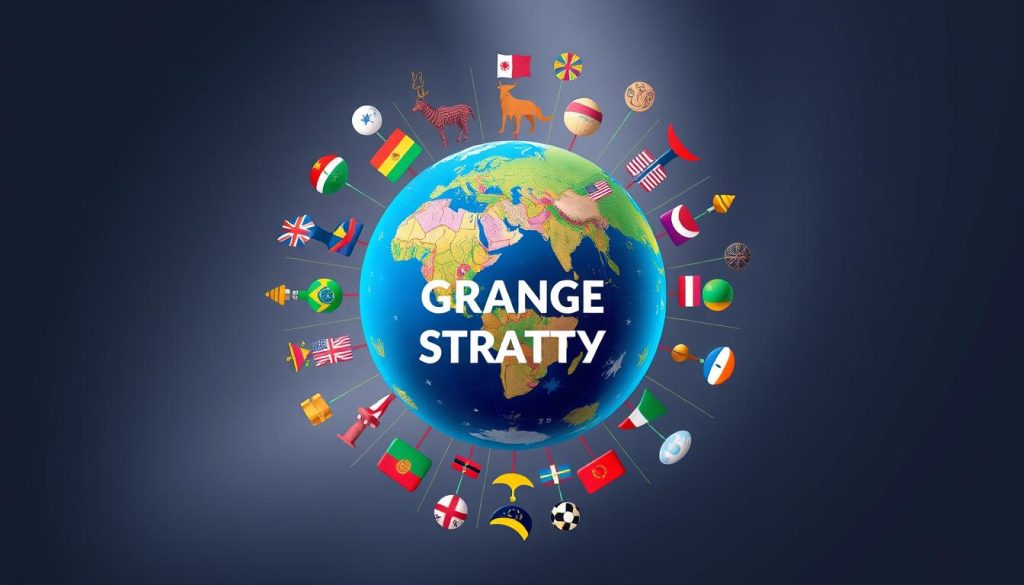
An international brand strategy focuses on adapting to local markets. It involves deep market research to understand local competitors and consumer habits. By tailoring marketing and products to local tastes, brands can better connect with diverse markets.
Both strategies have their benefits. Global branding can save costs in production and marketing, increasing profits. International branding, on the other hand, targets local preferences, improving market presence in certain areas.
The choice between global and international strategies depends on several factors. These include the product, target markets, and resources available. Brands must stay flexible and adapt, as analytics can show the success of these strategies. This highlights the need for ongoing improvement.
Global branding needs to grasp consumer behaviour in various cultures
In today’s world, successful global branding relies on knowing how people behave in different cultures. Our research found that 81% of consumers need to trust a brand before buying. This shows how important trust is in marketing worldwide.
Cultural Symbols and Their Marketing Significance
Cultural symbols mean a lot and can change how people see a brand. We discovered that 65% of consumers look at a brand’s CEO and staff when deciding to buy. This shows how key it is for leaders and staff to match cultural values in different places.
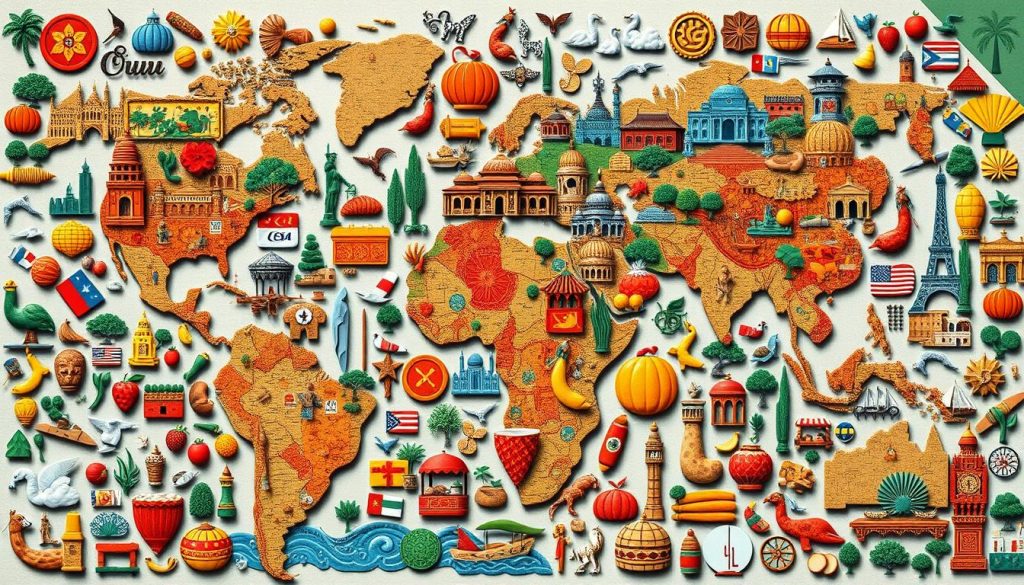
Adapting Brand Messages Across Cultural Boundaries
It’s crucial to adapt brand messages for different audiences. Our data shows that 94% of marketers think personal marketing helps brands grow. This shows the need for messages that fit local cultural details.
Local Consumer Preferences and Purchasing Patterns
Knowing what locals like is key for brand success. We found that 77% of consumers like to shop with brands they follow on social media. This shows how social media shapes what people buy and the need for content that fits local tastes.
- 64% of consumers have used branded hashtags on social media
- 46% of brand advertisers allocate mobile budgets to branding objectives
- Brand consistency can increase revenue by 10-20%
These figures highlight the need to adapt to local digital trends and keep a consistent brand image. By understanding these cultural differences, global brands can build stronger connections with people in different cultures.
Building Cultural Brand Identity in Global Markets
Creating a strong cultural brand identity is key for success worldwide. We’ll look at how storytelling, making real connections, and balancing global and local appeal can help brands succeed in different cultures.
Storytelling Techniques for Cultural Resonance
Storytelling is a strong tool for building a cultural brand identity. By creating stories that connect with local people, brands can build emotional bonds and boost engagement. Research shows that 70% of consumers are more likely to buy from brands that speak to them directly.
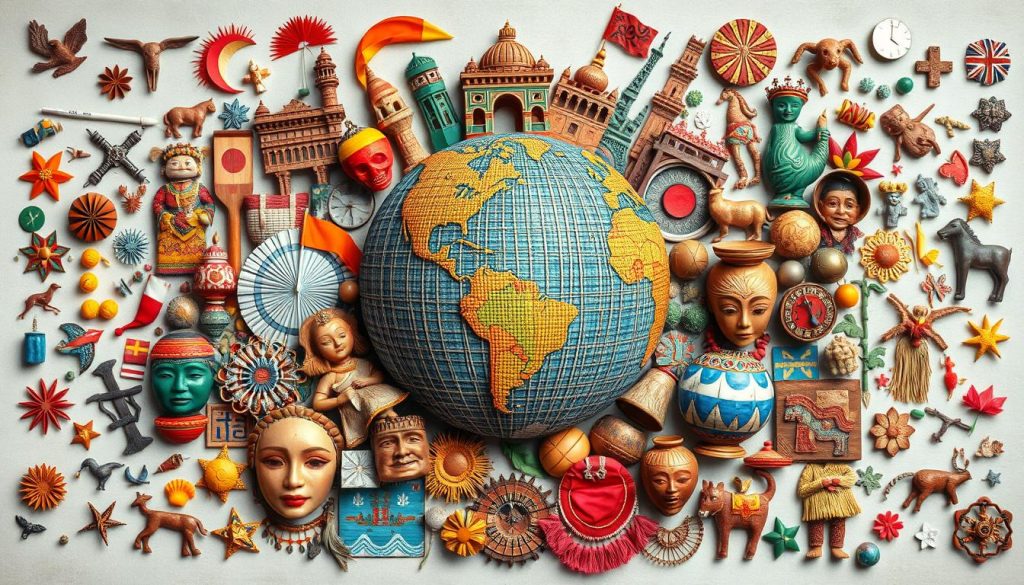
Developing Authentic Cultural Connections
To make real connections, brands need to understand local customs and values deeply. This approach is rewarding, as 60% of consumers prefer brands that show they care about culture. For instance, McDonald’s offers over 100 unique menu items worldwide, catering to local tastes.
Balancing Global Consistency with Local Relevance
It’s a fine line to keep a global brand consistent while adapting to local markets. Brands that get this right see a 30% higher customer retention rate in new places. Airbnb is a great example, adapting its platform for over 30 languages to meet local needs.
By focusing on cultural brand identity, storytelling, and real connections, brands can build strong relationships with people all over the world. This approach not only boosts brand loyalty but also helps brands grow in diverse global markets.
Cultural Adaptation Strategies for Market Success
Cultural adaptation is key to success in different parts of the world. Brands need to understand local customs and values to connect with people. Personalised marketing that shows respect for different cultures can really boost engagement.
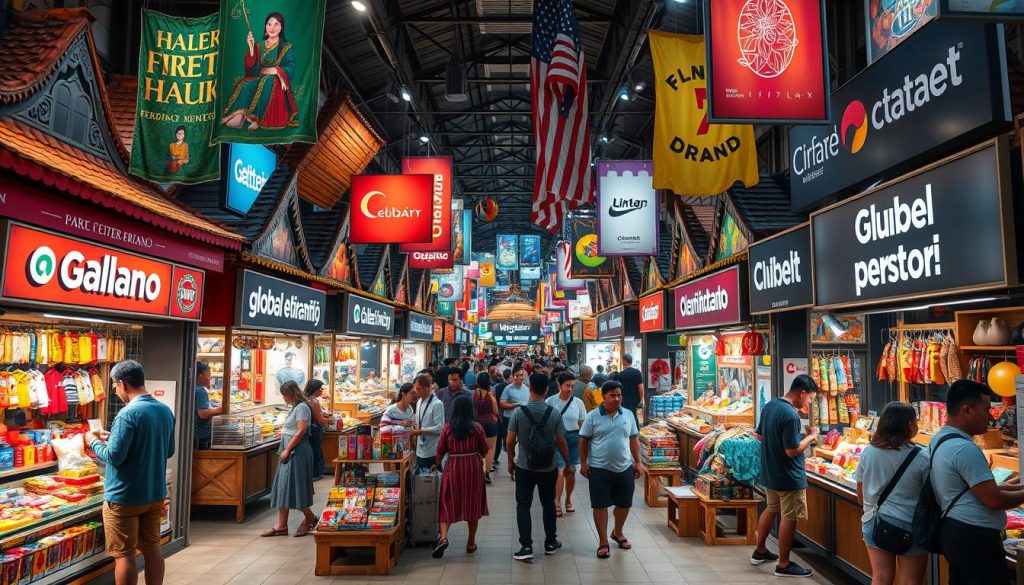
Localisation is at the heart of successful cultural adaptation. It means changing products, marketing messages, and customer service to fit local needs. For example, McDonald’s made the Maharaja Mac for India, showing how brands can adapt to local tastes.
Language is also very important. Using local languages or phrases in marketing builds trust and connection. Our studies show that brands that do this well get more loyal customers.
- Collaborate with local influencers to enhance brand credibility
- Tailor customer service approaches to match cultural expectations
- Adapt visual elements, colours, and symbols to cultural norms
- Customise product offerings to suit regional preferences
By using these strategies, brands can succeed in global markets. It’s all about doing your homework on local cultures and tailoring your approach.
Cross-Cultural Communication in Global Marketing
Cross-cultural communication is key in global marketing. Brands face language and cultural challenges when they go international. Our research found that using cross-cultural communication well can boost revenue by up to 20%.
Navigating Language and Translation Challenges
Beating language barriers is vital for success globally. A big 45% of global companies struggle with local customs, affecting their marketing. To tackle this, many brands use professional translation and cultural training for their teams.

Cultural Sensitivity in Visual Communication
Visual marketing is powerful but must be culturally aware. Brands that tailor visuals to local tastes see a 30% better brand image. Knowing local business cultures is key for great visual campaigns.
Digital Marketing Across Cultural Boundaries
Digital marketing opens up global opportunities but needs cultural care. 58% of businesses with local influencers see a 50% boost in engagement. This shows the need to adapt digital strategies to local tastes and norms.
- 70% of marketers say personalisation boosts customer experience across cultures
- 60% of consumers like brands that get their cultural nuances
- 80% of marketing pros stress cultural adaptation in ads
By focusing on cross-cultural communication, brands can make better global marketing. This helps build stronger bonds with people all over the world.
Monitoring and Managing Global Brand Reputation
In today’s world, keeping a good brand image everywhere is key. We must watch and manage our brand carefully, taking into account different cultures. A mistake in understanding cultures can cause big problems, like Chevrolet’s Nova in Latin America.
Knowing and valuing local customs is vital for a brand’s reputation. McDonald’s had to change their French fries in India and say sorry. This shows how important it is to fit in with local ways. IKEA did well in India by changing their approach to fit local homes.
Handling crises globally means acting fast and knowing the culture. Dove’s mistake with a racist ad hurt their image worldwide. To avoid such problems, we suggest working with local experts and doing deep market research. This way, brands can make ads that work in many places and keep customers loyal.
Good global monitoring uses social media and what people say about brands. Since 43% of marketers say social media is the best for ROI, it’s crucial. By keeping an eye on how people see our brand and responding well, we can make a strong global brand strategy. This will help us succeed in the long run.

